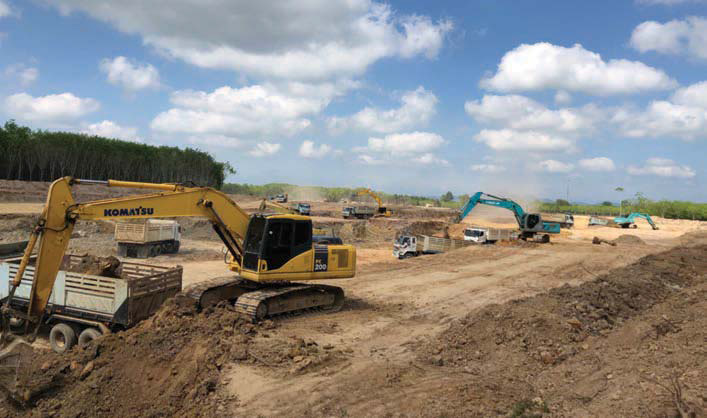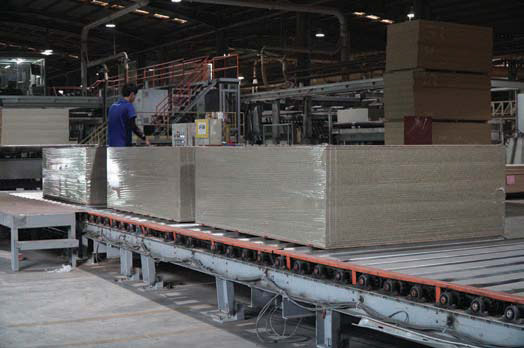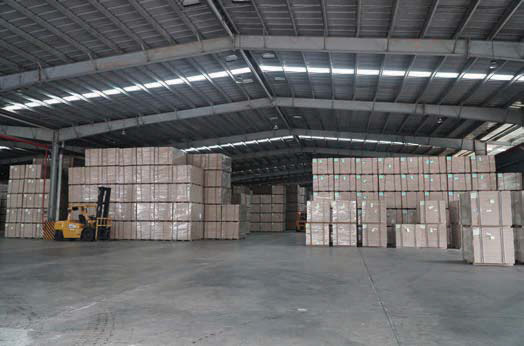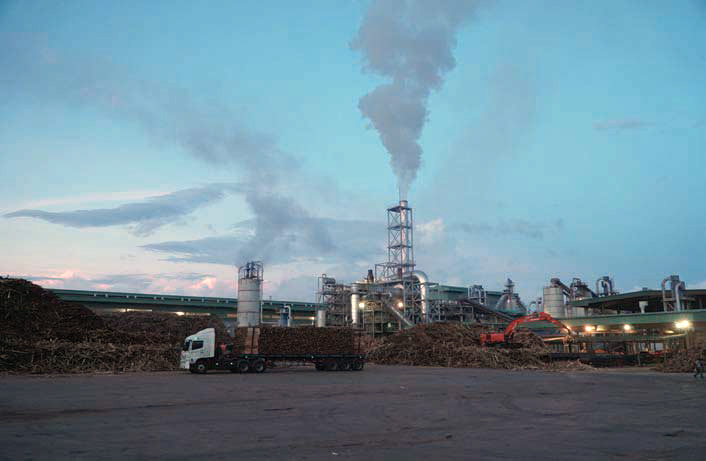Green river panels scores a hat-trick
29 June 2018Green River Panels’ third particleboard line will help the company expand its market share. Keren Fallwell reports.
Green River Panels’ new particleboard line in Thailand is due to start up late next year, marking two milestones for the industry.
At 50.4m long it will be the largest particleboard continuous press in Asia and it will also be Siempelkamp’s first 9th generation ContiRoll in the region.
Green River already operates two particleboard lines in Thailand and the new addition will more than double the company’s annual particleboard production capacity to over one million m3.
The new investment is motivated by what Green River has identified as the big potential for particleboard in Asia.
“Asia was typically a plywood market for furniture and special, diverse products until, in early 2003, China started switching to MDF,” said project manager Konstantinos Karakolidis.
“Now there are signs that the market is changing again. It was MDF until everyone discovered that particleboard was the more economical and environment-friendly alternative for furniture.
“Green River is standing for our environmental philosophy and our aim is to protect and preserve nature. We are using rubberwood, which comes from plantations and cannot be used for solid furniture; and waste from rubber plantations which makes our product ’green’.”
In the last two to three years there has been a decline in MDF investments in China and some mills have ceased production.
“For us it was also obvious when comparing the statistics of the development of the European and Asian market. In Asia, particleboard is way behind in terms of market share so that’s a key indicator that there is only one way for the market to go,” said Mr Kosta.
The two existing lines are on the same site in Bangklum, near Hat Yai in Songkhla province in southern Thailand, near the “Asia highway” which runs from Malaysia in the south to Bangkok in the north. The new line, however, will be located about 200km north of Bangklum, in Trang. It is in the heart of Thailand’s rubberwood plantation area, giving the mill access to an abundant supply of raw material.
“Trang is the best possible location to build a particleboard line, or any wood based panel line, because it’s in the middle of rubberwood plantations. We estimate that around 50% of our raw material will come from trimmings and the other 50% from sawmill residues,” said Mr Kosta. “There’s so much plantation wood that we have more than enough to run two mills there.”
With good rail links and access to the shipping ports of the Andaman Sea, the Trang location also provides access to Green River’s existing Asian markets; and potential new markets.
“The addition of our location in Trang was a strategic decision both for availability of raw materials and logistics,” said Mr Kosta.
“We already have sales activities in Malaysia, Indonesia, China and Korea. The new line will allow us to further expand our market share in Vietnam, India and the Middle East.
“The new line provides a better connection with India and gives us the opportunity to increase our customer portfolio because we’ll have more capacity available.”
The developing nations of Asia make the region a growing market, however, it is still subject to supply and demand fluctuations.
Mills dependent on rubberwood for the raw material are also affected by rubber prices.
These market swings were important in Green River’s decision to build such a large mill.
“A line of this size helps to stabilise performance, not only in terms of capacity but also financial performance. This was a key factor for us in choosing a big line,” said Mr Kosta.
Site preparation for the new mill began in February and work is now under way on the foundations. The mill is located on a 525,000m2 greenfield site and the new line will cover around 50,000m2.
“We bought the site because it’s large enough to accommodate one more factory and also provides space to put in lamination capacities in the near future and other downstream activities,” said Mr Kosta, adding that a second plant could be “OSB, MDF or particleboard”.
Installation of the line is scheduled to start in October this year and the first boards are expected to be produced in about August next year. The line will be designed for a daily capacity of over 2,000m3 and initially will produce the same standard sizes as the two lines in Hat Yai – 4x8, 5x8, 6x8, and 4x6 – in EO, E1, E2 grades and CARB compliant.
However, Green River does have plans to include value-added facilities, such as the lamination line, in the future.
Dieffenbacher supplied the company’s two existing lines. The first, a 20m continuous press, began production in 2007 and the second, a 28m continuous press, produced its first boards in 2016. For its third line, Green River has turned to Siempelkamp and its 9th Generation ContiRoll.
“Siempelkamp had a good understanding of our needs and were very convincing that they could support us the best to build up the biggest particleboard line in South-east Asia,” said Mr Kosta.
The 9th Generation ContiRoll also provides some technical advantages.
The new press control system called SPC GIII is the next step in intelligent production.
It comes together with a measuring frame that feeds back the absolute press gap by measuring the upper and lower hot platen position. This combination provides the lowest possible thickness tolerances on the finished raw board.
Another innovation provided is the ContiRoll Ecodrive system which is said to enable energy savings from 7-14%. Another advantage was that Siempelkamp and its subsidiary companies could supply the entire production plant and the Belgian subsidiary, Sicoplan, is providing the overall planning.
“We have Pallmann in the flaking, milling and re-chipping areas, CMC in the screening, sifting, gluing and blending areas, Siempelkamp in the forming station, forming line, press line, diagonal saw and storage system areas and finally Büttner in the dryer and energy plant – all included in one package,” said Mr Kosta.
In addition, Büttner, the dryer and energy plant specialist within the Siempelkamp group, will supply what will be Asia’s largest energy plant with a furnace capacity of 95MW, as well as Asia’s largest drum dryer, with a 7m diameter and a length of 36m.
Since commissioning its first particleboard line in 2006-7, Green River has acquired a breadth of knowledge and experience which it is now applying to the new line.
“During development from the first line to the third we have had the opportunity to improve our process knowledge and understanding of how to design an efficient production line,” said Mr Kosta. “Our thinking was also about how to design and build efficiently.
“All companies that have two or three lines go through a process of learning. It’s impossible to see developments with the naked eye but it’s the small things that make the difference.”
While Green River is expanding with a third line, it has continued to invest in its two existing particleboard plants too. Last year the capacity of the second line was increased by integrating various equipment. In addition, a fully-automated storage system solution from Dieffenbacher has been integrated, which handles both plants. The system is called a LUKKI and has been chosen as being the most modern and best solution for this multi-tasking job.
“We plan to invest further in Thailand to strengthen our position here but at the same time we are also looking overall in Asia to identify potential growth markets for investment in the future,” said Mr Kosta.



